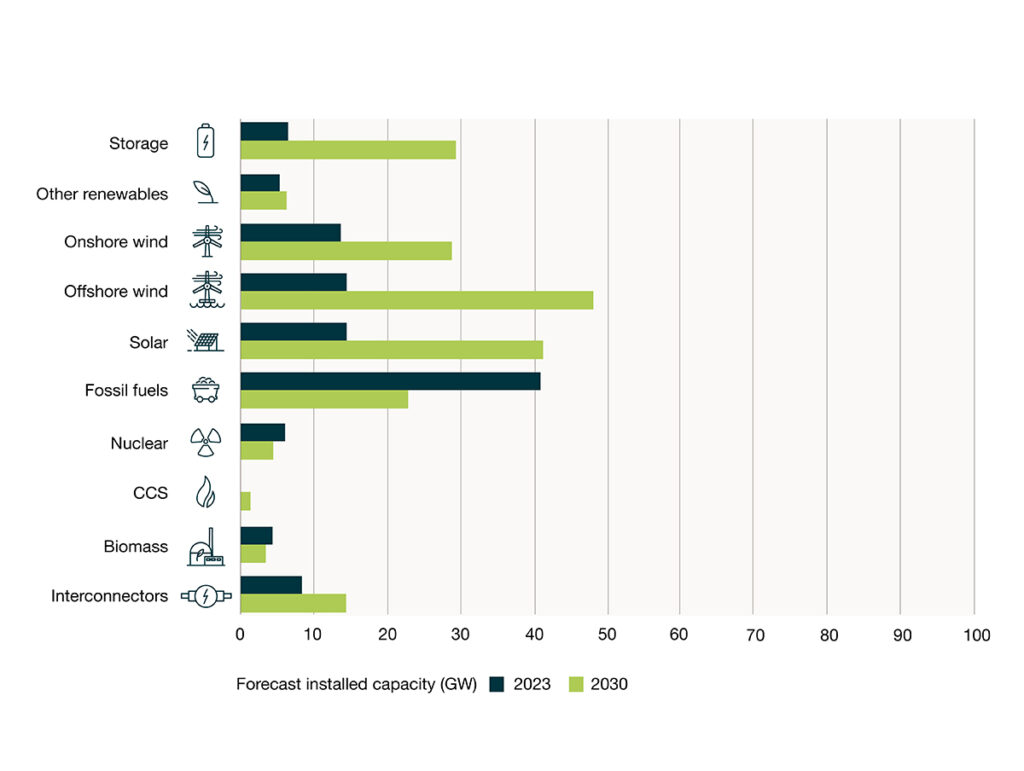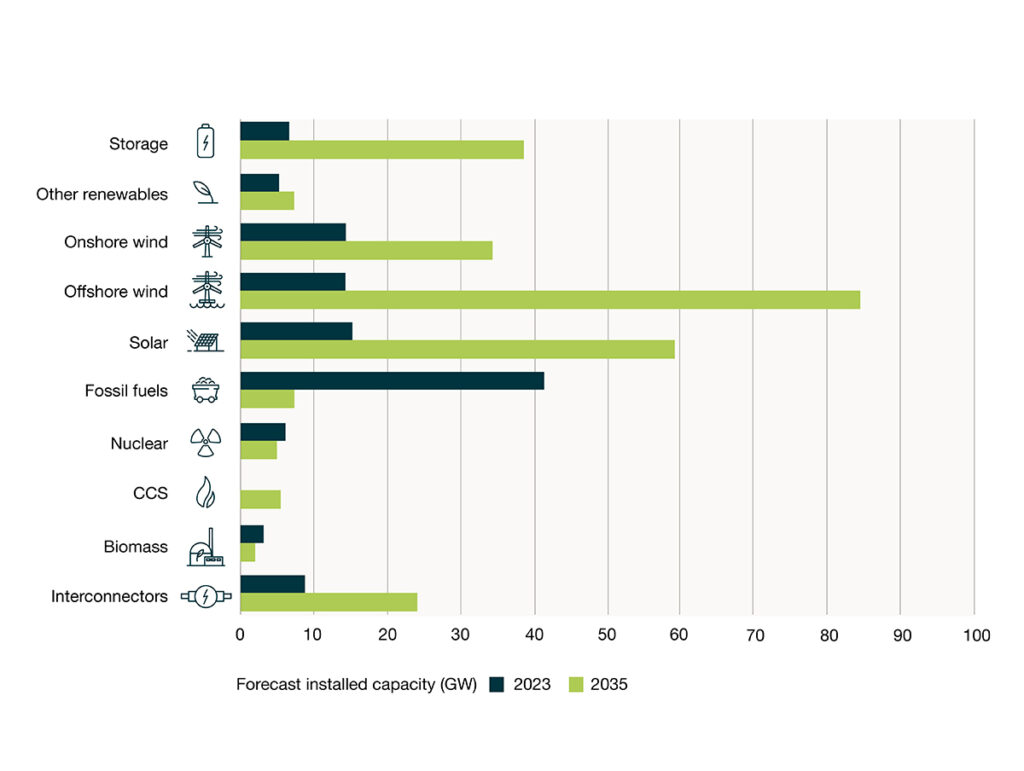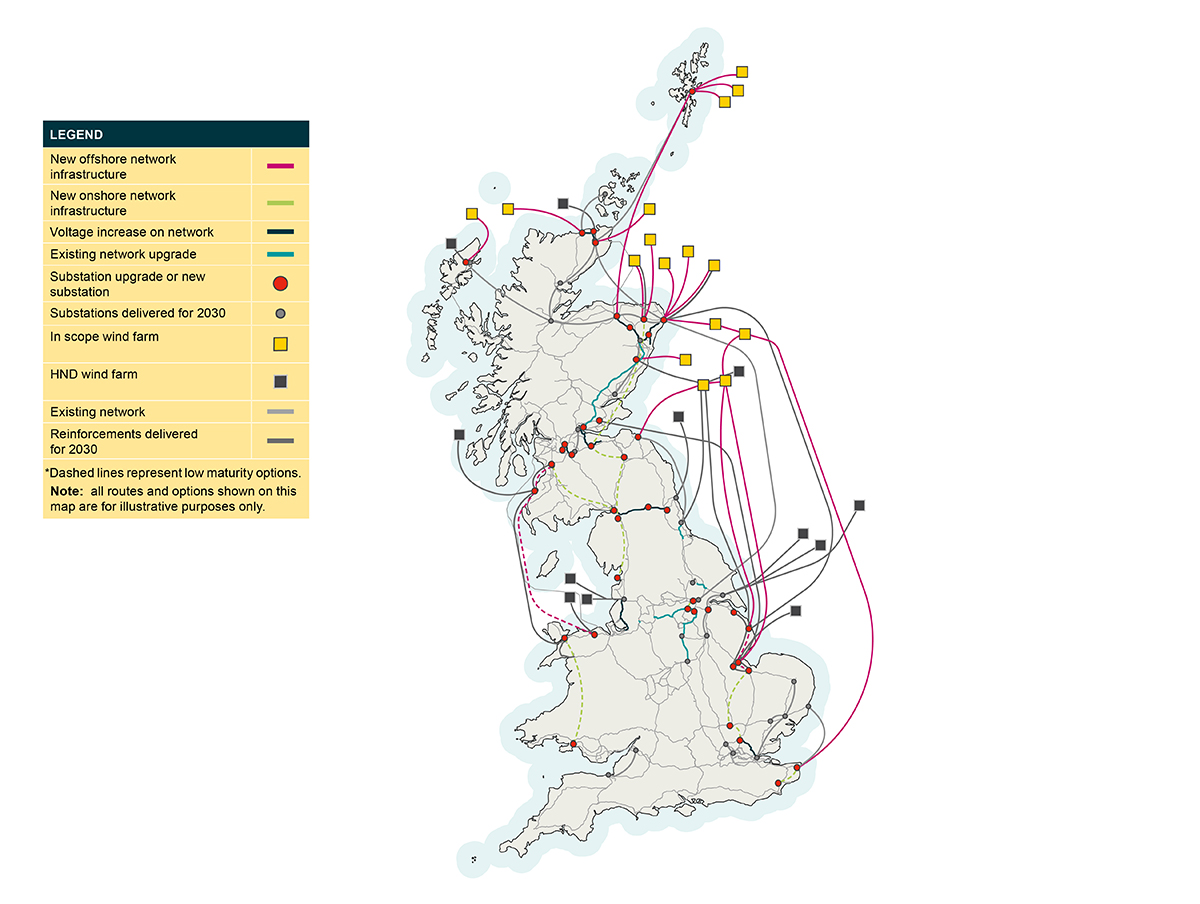Navigating offshore wind’s electricity transmission maze
Published
May 2024
Offshore transmission networks are set to undergo huge expansion but developers face an uncertain planning environment. Help is at hand though, write Wuxing Liang, Director of Network Studies, and Steven Whyte, Grid Modernisation Strategy Leader, at AECOM
Such is the speed of development in the UK’s wind sector that the body responsible for the UK’s electricity system has just had to almost double its plans for the amount of new electricity coming from offshore turbines in the next decade.
When National Grid ESO first outlined plans for its Holistic Network Design (HND) in July 2022, the system aimed to enable 23GW of new electricity by 2030, adding to the existing 14GW. In March this year, its Beyond 2030 report outlined plans for the addition of a further 21GW by 2035, by which time the government aims for the UK’s entire electricity supply to be from renewable sources.
The £58 billion upgrade program, which proposes a network with three times more undersea cabling than onshore infrastructure, is vital new infrastructure. It will be critical to allowing developers and transmission operators to handle the estimated 65 per cent increase in electricity consumption by 2035 in a market that National Grid ESO says has “one of the fastest decarbonising electricity grids in the world”.


How do traditional connection methods compare with the common infrastructure proposed in the HND?
The HND is designed to minimise the infrastructure required to upgrade the grid as well as disruption to communities and the onshore environment.
It would encourage more coordination over traditional radial connections, in which power flows along a single path, with an interface point onshore. It also presents a vision of electricity superhighways crisscrossing the North Sea with shared transmission networks and offshore hubs being used by multiple operators.
The HND vision addresses the offshore grid capacity crunch facing developers seeking to bring new projects online in 2030 and beyond. But it also presents developers with an immediate headache as many are confronted with the need to make infrastructure decisions based on a future transmission network – the design of which is incomplete.

Developers must choose the optimum way to get electricity from their future wind farms to the grid. Where there are opportunities, there are also risks.
First and foremost, developers with huge upfront costs want to know that when their turbines are ready to produce electricity, grid constraints will not prevent them from selling it.
Traditional radial connections link wind farms through onshore infrastructure. These are expensive but offer the comfort of familiarity and control, with developers less reliant on the activities of others.
In comparison, the HND option is attractive because its vision of common infrastructure comes with shared and lower costs.
But at present, the HND is evolving itself within a bigger framework of strategic energy planning, such as the Strategic Spatial Energy Planning (SSEP) and Centralised Strategic Network Plan (CSNP), aiming to provide a clearer planning for de-risking purposes. Having said that, the developers still need to make their own decision with uncertainties.
In an industry that is still struggling after the recent supply chain crisis drove up costs, and where margins can be thin and the market volatile, this is a major cause for concern.
(It is also worth noting here that major supply chain constraints are significantly extending delivery times for key transmission and distribution equipment. The lack of visibility brings another layer of uncertainty and risk for developers, as laid bare in a recent report by the UK’s Department for Energy Security and Net Zero.)
Also unknown at this stage is the exact nature of the infrastructure involved, with competing developers using different turbines to take electricity to offshore hubs, and potentially coming online at different times.
That means competitors needing to coordinate among themselves – and with transmission operators – to design and manage their operating environment, connections and electrical design alongside innovative contracting approaches. Such issues have hampered the development of hubs in Denmark and Germany, which are a little further down this road than the UK.
"At present, the HND is evolving itself within a bigger framework of strategic energy planning, such as the Strategic Spatial Energy Planning (SSEP) and Centralised Strategic Network Plan (CSNP), aiming to provide a clearer planning for de-risking purposes. Having said that, the developers still need to make their own decision with uncertainties."
Hydrogen networks and hybrid assets are also in the mix
Another option would be for developers to look to hydrogen networks, to take advantage of the anticipated boom in green hydrogen and ammonia production.
There is also increased activity in international electricity networks. Ofgem has recently introduced a pilot regulatory framework for so-called Offshore Hybrid Assets, which consist of connected offshore wind farms and an interconnector between two markets.
As with the HND, however, these options also bring considerable uncertainty as much of the supporting infrastructure is yet to be built.
Offshore wind farm developers must navigate through this transmission maze. But how?
As we have outlined above, conducting planning with insufficient information presents developers with a genuine challenge.
The lack of available data can cover a range of issues from the location of the connection point to the technical specifications of the electrical infrastructure.
This is not an insurmountable hurdle, however. Digital technologies are playing a critical role in helping bridge this information gap. From the deployment of innovative data acquisition techniques to the integration of BIM/digital twin platforms and the use of AI models, we can generate meaningful insights and intelligence for our clients.
We are using our deep experience in offshore wind and other energy projects (such as the NeuConnect interconnector between the UK and Germany, and Eastern Green Link 1 and 2 grid reinforcement projects) to find new ways to provide developers with critical insights that allow them to navigate the uncertainties in offshore transmission networks.
By building multiple models of transmission systems, it is possible to take into consideration the stated design of the offshore network and produce a wide range of scenarios that seek to understand the implication of interaction between different schemes and technologies in building the electrical environment.
"By building multiple models of transmission systems, it is possible to take into consideration the stated design of the offshore network and produce a wide range of scenarios."
These models consider the complex composition of the offshore network, encompassing High Voltage Direct Current (HVDC) interconnectors, offshore wind farms, and High Voltage Alternating Current transmission circuits.
We recently used this approach with an offshore developer engaged in the design phase of a major new wind farm. Our client was able to better understand the options for bringing electricity to the grid, and the benefits and risks involved. The issues this developer faced are similar to those many others are confronting.
Early consideration of socio-environmental constraints is equally important
While economic and technical considerations are often front and centre, the importance of taking a holistic view to evaluate the wider socio-environmental constraints and impacts of each scenario cannot be overstated.
A publicly available example of this environment-first approach in action is the East Coast Grid Spatial study, which we conducted on behalf of The Crown Estate. The origin of the study “was a desire to introduce an evidence base ... [to meet the need for] more explicit forward planning and strategic decision-making with a focus on coexistence.”
Planning for success
The huge expansion of offshore wind promises significant growth for developers, but difficult decisions they make now will impact financial and operational performance in years to come.
We are committed to partnering with our clients to support them in getting those decisions right based on the best available technical and environmental information and projections, so that we facilitate this critical evolution of offshore transmission infrastructure together.
With thanks to contributor John Michael Dargue.
Want to dive deeper?
To learn more about ensuring a reliable and resilient power supply and why cybersecurity is crucial in the shift to a decarbonised energy system, click here.






